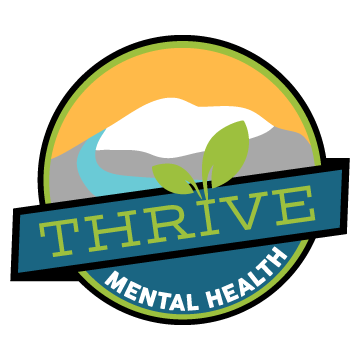Mind/Body Connection
Running is therapeutic. I love the feeling of getting my body revved up and taking it for a spin along some dirt path that follows the river or that sends me in the direction of the mountains. I love the pine infused air that I’ll inhale some thousand times while I’m rolling along. I love how it feels to hit the ground with my feet and then to bounce back, again and again and again. I love the time I get outside- putting myself in the position to catch something spectacular provided by nature: like that one time I ran into a herd of female moose and they didn’t know I was watching them, or the time I watched as the entire sky above me turned red from the sunrise, or just the simple completeness of the butterflies, birds, and wildflowers swirling around me while the sun glimmers across the water.
Most of the time when I tell people I’m a runner they remark with some version of, “ew.” I think the majority of us have gotten to know running as conditioning or punishment… Leaving us closed off to the gifts that it brings in it’s pure form. Sure, running can induce feelings of suffering. It can be one of those things that get’s harder before it get’s easier. But like all good things, the rewards are worth the struggles.
With stay at home orders and increased isolation, more of us are running and in a greater need of it’s benefits. Running enhances blood flow, sending nourishing blood to your brain and helping to release endorphins and other mood-elevating compounds. The effects are lowered stress and tension which can help alleviate symptoms of depression and anxiety.
Taking yourself out for a run is an investment into your mental health. If you are interested in getting into running or if you are struggling with it now, I’ve offered a few tips below with the goal of guiding you to the rewards I have found.
Start slow. In college when I would come back to running after a break, my college coach would prescribe me a come back plan that looked like this: 8 minute jog, day off, 10 minute jog, day off, 12 minute jog, day off… following the same progression for two weeks. The hardest part about running is getting into it/back into it. A small and easy progression like this turned "the hardest part about running” into a time to take in the joy of running, one small bite at a time.
Do away with (most) metrics. Run to run. Forget about how many miles you’ve ran or what pace you ran them in. I find these metrics to be distracting to progression. I recommend running for time rather than miles. This means instead of running 3 miles today run for 20 minutes. The point here is to just cut the metrics down and make it as simple as possible. If you have a 3 mile loop you like to do, I would say this is achieving the same thing if you can forget about the time it took you to run it. There is a time and place to whip out the hard data and use it for comparison. If you have some goals you are trying to achieve with your running plan then once or twice a week you might need the metrics but on the other days it’ll be even more important to lose them.
Pay attention to how you feel. This might allow you to notice the benefits your body is experiencing and will also help you to respond appropriately if you are pushing it too much. Your priority with running should always be for better health. That’s what this whole blog is about anyways, right? Ignoring your bodies cues can easily result in an injury that will prevent you from being able to run. Remember that when you’re hurting and trying to push yourself forward anyways. Pay attention to how you feel and honor it.
Stick with it. The previous tips should help with this one because they will increase your chances of experiencing the rewards of running and lure you in for more. My high school coaches motto was, “You have to run, to run.” Pretty simple. You get fitter each time you run so if you want to feel fit while running then you have to run consistently.
Be present. I should couple this one with, please don’t run on a treadmill unless you absolutely have to. Go outside. Breathe in the fresh air and take in the sunshine. This is a big part of what makes running so magical and you don’t want to miss out on it… so be present and take it in while you’re out there.
Stretch afterwards. I’ll end on this one because it isn’t the end of the world if you don't stretch, but it will help. Your body is the most pliable after you’ve warmed it up from a run. Take advantage of the opportunity to open your body and soak in your work by putting yourself through a nice stretch routine. If you are going out for your first 8 minute jog, account for an addition 3 minutes of stretching. I allow about 10 minutes for stretching. Stretching will aid your body in it's recovery process, help prevent injury, and set you up for a better run the next time.
By: Sadi Henderson

